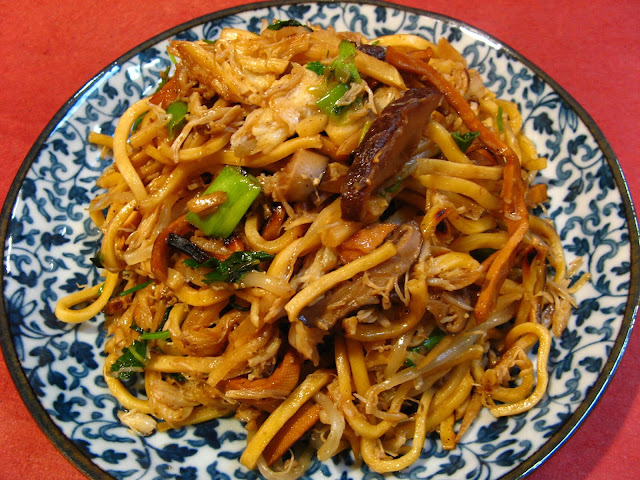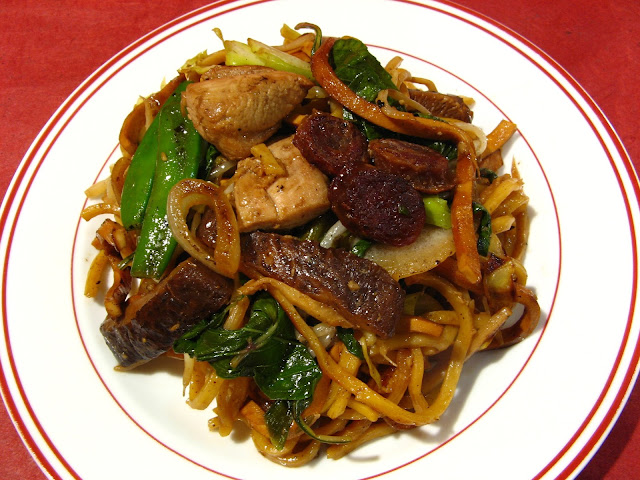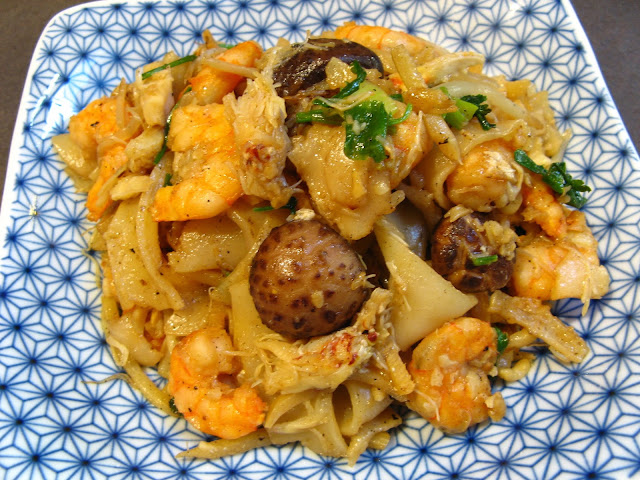I’ve been cooking all my rice in a
clay pot rather than a rice cooker since I prefer the results. For my family’s
2016 Thanksgiving dinner, I made Chinese
Sticky Rice (糯米飯, No6 Mai5
Faan6) in a clay pot. I followed the same procedure outlined in
the Clay
Pot Rice (煲仔飯, Bou1 Zai2
Faan6) recipe, but used the ingredients for Chinese Sticky Rice.
I also used dried shrimp and scallops that I buy in bulk from my local Chinese herb
and dried seafood store rather than the prepared packages at my local Asian
market. If you’re fortunate enough to have a Chinese herb and dried seafood
store nearby, you’ll find a wide selection of dried shrimp and scallops (and
other seafood) that’s not available at Asian markets.
Using a clay pot to make rice is
very similar to making rice in a pot. A crust is produced on the bottom of the
clay pot, similar to cooking rice in a pot, and you don’t have to reboil to
release the scorched rice from the bottom. The taste of the rice is very
similar to making rice in a pot. The sequence of cooking the rice in a clay pot
is:
- Pre-heat the clay pot over medium heat for 5 minutes to prevent shocking the clay pot and possible breaking it.
- Bring the clay pot rice to a boil over medium-high heat for 10 minutes.
- Simmer the rice for 15 minutes over low heat.
- Scorch the rice using medium-high heat for 10 minutes.
- Turn off the heat and allow the clay pot to sit for 10 minutes to release the scorched rice from the bottom.
- Serve the rice.
Given that there are many variables when cooking rice in a
clay pot, the cooked rice will vary from every time you cook it. If more water
is used, the rice will take longer to cook. If too little water is used, the
rice becomes more al dente and the volume decreases because the rice doesn’t get
fluffy. Burner heat will determine how quickly the rice cooks and how scorched
the rice will get. You just have to experiment and watch for the indications
that signal when the rice is cooked to your personal preference. Making rice in
a clay pot seems like a simple task, but you’ll find that it takes practice to
get consistent results.
Enjoy!



















